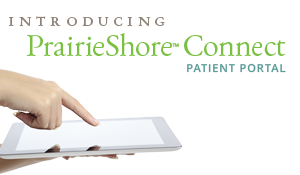Stellate Ganglion Block
What is a stellate ganglion block?
A stellate ganglion block is an injection of medication into the stellate ganglion, a group of sympathetic nerves which control the arm and upper body. The nerves are located on either side of the voice box, in the neck. This injection can help relieve pain in the head, neck, upper arm and upper chest. It also can help increase circulation and blood supply to the arm. The nerves are located on either side of the voice box, in the neck.
How is a stellate ganglion block done?
This is an outpatient procedure, performed under sterile conditions, and often with x-ray guidance. You may receive intravenous medication to relax you if previously arranged. Then, you’ll lie on your back on the procedure table. Your neck will be prepped and draped in a sterile manner before local anesthesia is administered to numb the superficial skin. The doctor will insert a thin needle into your neck, near your voice box, and inject anesthetic and steroid medications. Usually, the procedure takes less than 30 minutes, and you can go home the same day.
How effective is a stellate ganglion block?
Some patients report pain relief immediately after the injection, but the pain may return a few hours later as the anesthetic wears off. Longer term relief usually begins in two to three days, once the steroid begins to work.
How long the pain relief lasts is different for each patient. Some may be pain-free for days or weeks. Usually people need a series of injections to continue the pain relief. Sometimes it takes only two injections; sometimes it takes more than ten. The relief tends to last longer with each treatment. For some patients, your pain is unchanged but, there is evidence of a sympathetic blockade. This is of diagnostic value to your physician and tells him or her that your pain is not responsive to a sympathetic block and he or she can try other treatment modalities to treat your pain.
What are the risks?
The risk of complication from a stellate ganglion block is low. There could be bruising or soreness at the injection site. Serious complications, including infection, bleeding, spinal block, epidural block, seizure due to injection into blood vessels, collapsed lung, and nerve damage, are uncommon.
Side effects of the procedure may include:
- Decreased sweating on the same side of the block
- Difficulty swallowing
- Drooping eyelids
- Feeling of a “lump” in your throat
- Hoarse voice
- Nasal stuffiness
- Red or “bloodshot” eyes
- Tearing
- Warmth or tingling in your arm or hand
These effects will subside within a few hours and can serve as indicators of a technically successful block.
Who should not have the procedure?
If you are allergic to any of the medications to be injected, are on a blood thinning medication, have an active infection, are pregnant, or have poorly controlled diabetes or heart disease, you should speak with the doctor. There may be special instructions or lab testing or perhaps you may be rescheduled.
What happens afterwards?
Immediately after the injection, you may feel your arm getting warm. In addition, you may notice that your pain may be gone or quite less. You may also notice “a lump in the throat” as well as hoarse voice, a droopy reddened eye and some nasal congestion on the side of the injection. In rare cases, some patients may experience headaches. When your voice returns to normal, you may begin to sip water through a straw and gradually work up to eating solid foods. You should have a ride home. We advise patients to take it easy for a day or so after the procedure. You can perform the activities that you can reasonably tolerate. Some patients may go for immediate physical therapy. Unless there are complications, you should be able to return to work the next day.
Is a stellate ganglion block right for you?
A stellate ganglion block may be right for you if you have nerve pain in the head, neck, upper arm or upper chest that does not respond to other measures. Stellate ganglion blocks are a well-established treatment for providing relief from sympathetically-maintained pain syndromes. Contact us to find out more!
At PrairieShore™ Pain Center, our goal is to relieve your pain and improve your quality of life. If your primary physician has advised you to see a specialist for your pain, turn to us for help. To schedule your appointment, please contact us here or give us a call at (847) 883-0077.







